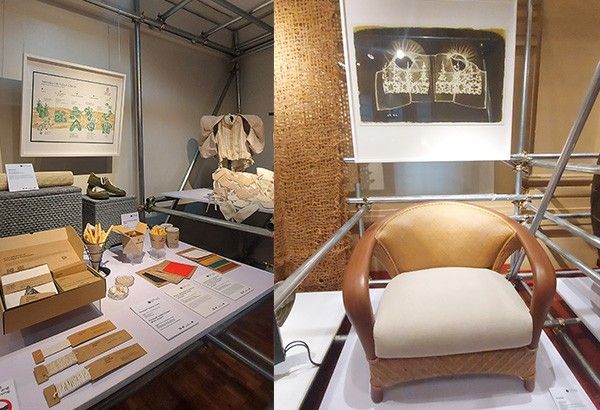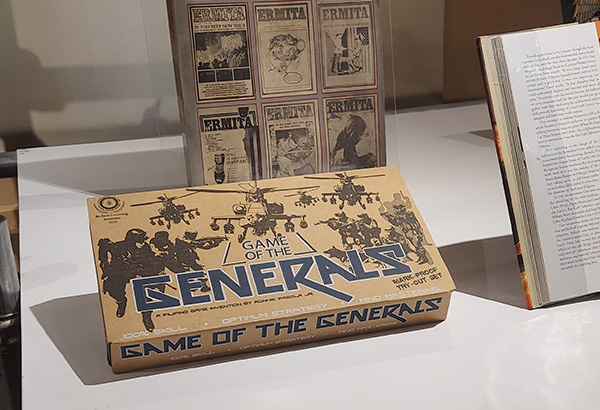
MANILA, Philippines — For many years, Filipinos believed that it was their fellowmen who invented the fluorescent lamp, the Moon Buggy and yoyo, and these were even taught in schools or printed in textbooks.
Since then, it has been known that German physicist Edmund Germer, and not Filipino electrician Agapito Flores, who invented the fluorescent lamp; Filipino engineer Eduardo San Juan did submit a Moon Buggy design to National Aeronautics and Space Administration (NASA) but it was not selected to become the final lunar rover design; and Filipino-American yoyo maker Pedro Flores patented an innovation of the modern yoyo, but it was actually the ancient Greeks who invented it.
But don’t fret.
Be proud! At the recent opening of “Art x Design: A Special Reception of the 50 Years of Philippine Design and Beyond” exhibition in National Museum of Fine Arts, it was revealed that there are at least five things that Filipinos indeed designed and invented and have since been useful not only to Filipinos, but to humankind.
Game of the Generals

In 1970, Sofronio “Ronnie” H. Pasola Jr. invented the educational war game “Salpakan,” which has been produced as “Game of the Generals” by MindMasters Inc. in 1972.
More than just a game board, “Game of the Generals,” also called “GG,” “GOG” or “The Generals” commenced the 20th century fad for games that paved the way for the appreciation of video games, said the Design Center.
Game of the Generals tests military-like skills with cumulative moves. Although its popularity declined with the ascendance of digital games, the board game remains to enjoy having clubs and a great following, where members meet for tournaments, just like in chess.
Floral architecture
Gualberto “Rachy” Cuna is the inventor of floral architecture, said the Design Center.
As arguably the country's only floral architect, Cuna is considered as among the most articulate and most celebrated Filipino decorators of special occasions who have elevated the florist and floral arrangement into an art form.
Safe abaca fiber-extracting machine

According to Philippine Fiber Industry Development Authority (PhilFIDA), the Philippines is the world's top exporter of abaca that supplies 85% of the global abaca fiber production, amounting to about $80 million (about P4.5 billion) per year.
But to extract abaca fiber, farmers face several hazards, including the exposure to moving blades.
Thus, in March 2022, the Department of Science and Technology – Forest Products Research and Development Institute (DOST-FPRDI) reported that it has developed a solution to one of the farmers’ problems. The new fiber-extracting machine has been made to be safe and effective in giving farmers higher abaca fiber quality and yield, minus the exposure to hazardous blades.
Because of such innovation, the increased abaca production has also resulted into more exploration of its use – from being eaten as longganisa skin, to abaca nets made of kilometers of coconut coir, which are then thrown into mountains to prevent erosion. Unlike plastic, the abaca net disintegrates into the soil, making the net instrumental for sustainable replanting and reforestation.
Apart from abaca, the Philippines used to be the global leader in buttons and Christmas decorations exportation, until China came in with its cheap labor and mass production.
Permacane technology

Eduardo Yrezabal is credited to have invented the Permacane technology for cladding elements of furniture and parts of architecture, so 97% of rattan is used and not wasted, which is an answer to the dwindling supply of rattan in the country.
Yrezabal is the eponymous founder of a Philippines-based company that reimagined wood and rattan furniture by transforming these ordinary materials into extraordinary shapes by highly-skilled workers using technology.
Pinyapel

Pinyapel is a new, 100% natural, Filipino treeless paper made from discarded pineapple leaves, which Filipinos used to throw tons and tons of, said exhibition curator Marian Pastor Roces.
Developed by the Design Center of the Philippines, the Pinyapel is a specialty paper now being used to make paper cups, shopping bags and other types of boxes and packaging, which pose as an answer to plastic waste and deforestation of trees typically used to make paper.
The main challenge in mass-producing Pinyapel, however, is that it requires very expensive technology to produce, said Roces. Thus, the Design Center is now working with other government agencies to develop a less expensive technology that could produce Pinyapel as it holds promise in the global market since the country is the second biggest pineapple producer on the planet.
*****
Credit belongs to : www.philstar.com
 MaharlikaNews | Canada Leading Online Filipino Newspaper Portal The No. 1 most engaged information website for Filipino – Canadian in Canada. MaharlikaNews.com received almost a quarter a million visitors in 2020.
MaharlikaNews | Canada Leading Online Filipino Newspaper Portal The No. 1 most engaged information website for Filipino – Canadian in Canada. MaharlikaNews.com received almost a quarter a million visitors in 2020.


